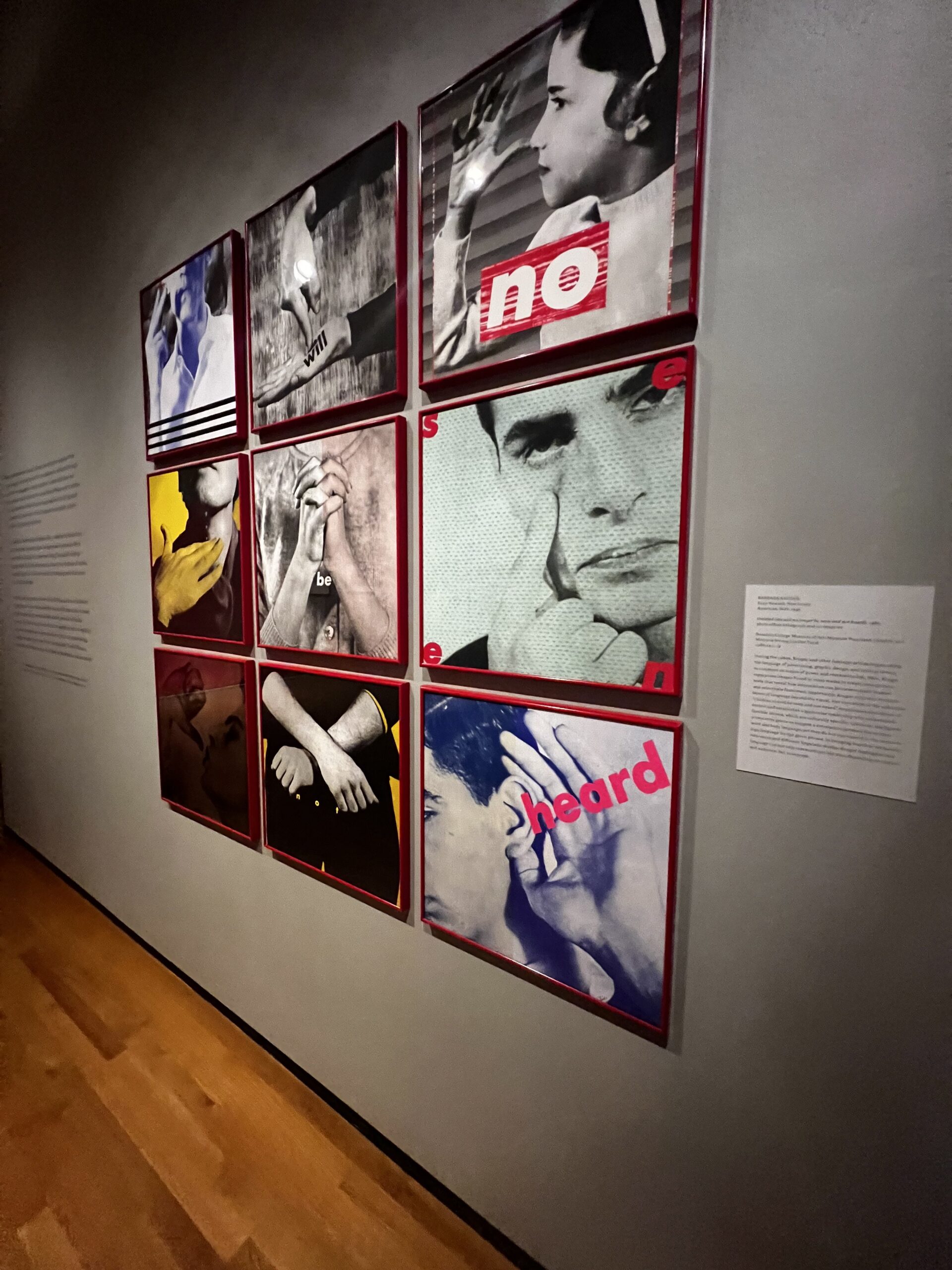New at the BCMA: “Turn of Phrase” explores language in global contemporary art
February 3, 2023
 Chinwe Bruns
Chinwe BrunsBeyond the classics and language departments, discussions about language and translation now have a new on-campus home at the College: in the Bowdoin College Museum of Art (BCMA). “Turn of Phrase: Language and Translation in Global Contemporary Art,” a new exhibit at the museum, opened at the BCMA in December and will run through June 4.
The exhibition was curated by Curatorial Assistant and Manager of Student Programs Sabrina Lin ’21. In “Turn of Phrase,” Lin explores the interplay between language and visual art, incorporating works from artists around the world that span from the 1980s to the present.
Museum personnel feel that “Turn of Phrase” is right at home at a liberal arts college that emphasizes cross-curricular engagement.
“[This] is an exhibition that inherently is interdisciplinary in its very conception,” BCMA Co-Director Anne Collins Goodyear said.
Lin said that her work on “Turn of Phrase” was inspired in part by the BCMA’s summer 2019 exhibition “Art Purposes: Object Lessons for the Liberal Arts,” which emphasized art’s role as a tool in a liberal arts education. Japanese artist Yukinori Yanagi’s carpet, featured in the 2019 exhibition, is also on display in Lin’s curation.
Yukinori’s work explores the identity of the former Japanese empire through the languages of its former colonies. Lin described the carpet as an origin point for the exhibition.
“[It] really sparked a lot of my questions,” Lin said.
“Turn of Phrase” draws primarily on the BCMA’s permanent collection but also features some new acquisitions for the museum, including Choctaw-Cherokee artist Jeffrey Gibson’s “The Anthropophagic Effect, Garment No. 3,” which recreates the imagery of the garments worn by Plains nations participating in the late 19th-century Ghost Dance movement using bright, artificial materials.
While the exhibition’s art is global, Lin credits several members of the Bowdoin faculty with inspiring her curatorial process. These credits include Professor of Asian Studies Vyjayanthi Selinger and Professor of Romance Languages and Literatures Margaret Boyle, who directs the Multilingual Mainers program.
“Turn of Phrase” even includes an interactive component in which visitors are invited to consider Uruguayan artist Luis Camnitzer’s mixed media work by writing their interpretation of the art on a section of the gallery wall. Responses so far vary from “Interdiction” to “Slay!”
Lin described the show’s curation as being guided by broader ideas about communication rather than specific artistic themes and that much of the curation process occurred as the exhibition was being physically assembled. “Turn of Phrase” includes art that spans cultures and mediums, featuring print, ceramic, photograph and a short film.
Recognizing the limitations of the exhibition’s size forced Lin to be intentional in her selections of the artworks in the exhibition.
“I had to be very deliberate with … what works I put in the show and how I faithfully represent … a diverse array of experiences and identities,” Lin said.
Obtaining some of the art pieces was also a challenge. Lin had tried twice to acquire Chinese artist Song Dong’s “Stamping the Water,” a set of thirty-six digital color photographs, before she was finally able to procure the work from the University of Oregon’s Schnitzer Museum of Art.
Goodyear hopes that “Turn of Phrase” will ask viewers to consider how language and translation inform their own perceptions.
“I feel like this is an exciting invitation to ask us to think about aspects of our intersection with the world that are so innate. We might overlook them, like the way in which we use language,” Goodyear said.
Lin hopes that Bowdoin students especially will consider the questions the exhibition poses.
“I hope that students will come to the show with a very open mind about … what they can learn,” Lin said.

Comments
Before submitting a comment, please review our comment policy. Some key points from the policy: